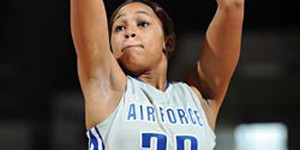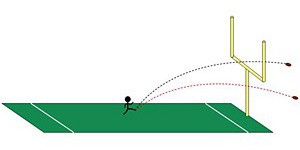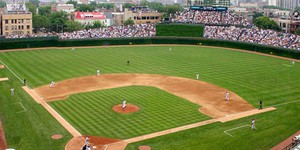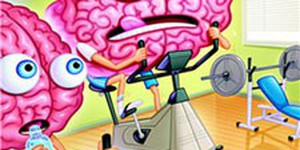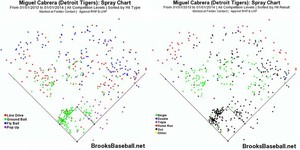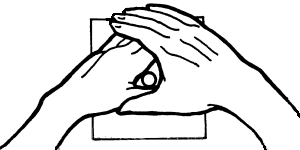Sports Science Science Projects (57 results)
Top athletes and coaches use a whole lot of science and engineering to improve performance and increase the chances of winning. Technologies like better tennis rackets, sleeker running and swimming outfits, and aerodynamic soccer balls, mean that current athletes are breaking world records left and right. Add to that better nutrition and science-based training regimes and you have an era of amazing athletes! Explore how science and engineering impact your favorite sport.
|
Select a resource
Sort by
|
You are right next to the basket and someone passes you the ball. Will you go for a direct shot or will you use the backboard and take a bank shot at the basket? Would different positions on the court give you a higher chance of making a shot using the backboard than others, even when keeping the distance from the hoop the same?
In this science project, you will build a scale model and test different positions on the court to determine if one results in a better chance of making a bank shot…
Read more
Featured
Have you heard that garlic powder is supposed to inhibit the growth of bacteria? Which do you think would make a better disinfectant: a solution of garlic powder or a solution of bleach? This project shows you a straightforward way to compare the effectiveness of different disinfectants (or other antimicrobial agents), by measuring zones of inhibition on a culture plate.
Read more
Did you know that throwing, kicking, and punting a football all involve the science of projectile motion? A star NFL® quarterback, kicker, and punter each need to have a very good understanding of how a football moves through the air in order to help them win games. In this science project, you will set up a rubber band-powered catapult to represent a field goal kicker, and study how changing the distance from the goalposts affects how hard it is to accurately kick a field goal.
Read more
What do Nolan Ryan, Mark Wohlers, Armando Benitez, and Roger Clemens have in common? These men are all major league baseball pitchers who have pitched baseballs at 100 miles per hour or greater! What does it take to throw a baseball this fast? Does it come down to having the biggest muscles? Can a ball thrown this fast also be accurate? In this sports science fair project, you will learn about the biomechanics of pitching. Investigate how body position and physics interact to produce fast…
Read more
Are you a piano player or a video gamer? Then you might have a quick reaction time that can come in handy while playing sports. Find out how to measure your reaction time and compare it to your friends and family with this fun experiment.
Read more
"Use it or lose it!" Sure, we all know physical exercise is important to keeping our bodies fit. But how important is physical exercise to your brain? In other words, is there any connection between an active body and increased brain power?
This is an easy project where you can test the effect of exercise on a critical brain function: memory.
Read more
Like to have the balance of a tightrope walker? Try the more close–to–the–ground balancing test in this easy experiment to learn a few trade secrets of the high wire experts. In this project, you'll find your center of gravity and explore the physics of balance at the same time. No net required for this balancing act!
Read more
How high can you throw different types of balls, like a golf ball, a basketball, and a football? Would one of them go higher than the others? Do factors like mass, shape, and volume influence the final height? You can measure the approximate maximum height a thrown ball reaches by measuring the time it spends in the air.
To do this project, you'll need at least one ball and a helper with a stopwatch. Your helper should start timing just as you release the ball, and stop right when the ball…
Read more
In baseball, coaches use hit charts to track the results of every hit each player makes, giving a measure of the player's performance. Have you ever wondered what things affect where a baseball goes when a player hits it with a bat? In this project you will set up an experiment to hit a ping pong ball in a controlled manner using a toy catapult, then learn about the physics of baseball by making your own hit chart.
Read more
Everyone's used to the idea that people are either right-handed or left-handed for particular tasks. That is, one hand is preferred (or dominant) over the other for a particular task. Did you know that people also have a dominant eye? This project is designed to look for consequences of having the dominant hand and eye on the same side of the body (uncrossed) vs. having the dominant hand and eye on opposite sides of the body (crossed).
Read more
Block off one-third of a soccer net with a cone, 5-gallon bucket or some other suitable object. Shoot into the smaller side from a set distance, but systematically varying the angle to the goal line. Take enough shots at each angle to get a reliable sample. How does success vary with angle? For a basic project: How do you think your success rate will vary with angle? Draw a conclusion from your experimental results. A bar graph showing success rate at different angles can help to…
Read more
|
Explore Our Science Videos
Cricket Wicket Knockdown: 2020 Engineering Challenge
Measure Static Electricity With An Electroscope!
Liquid Density Column – STEM Activity


